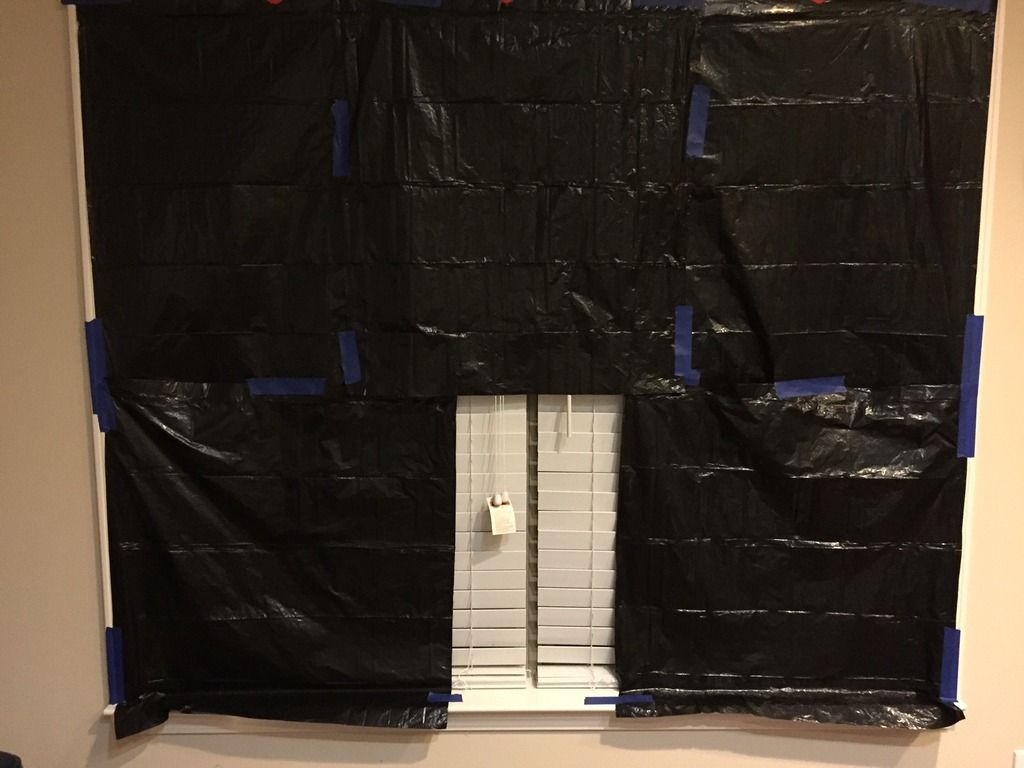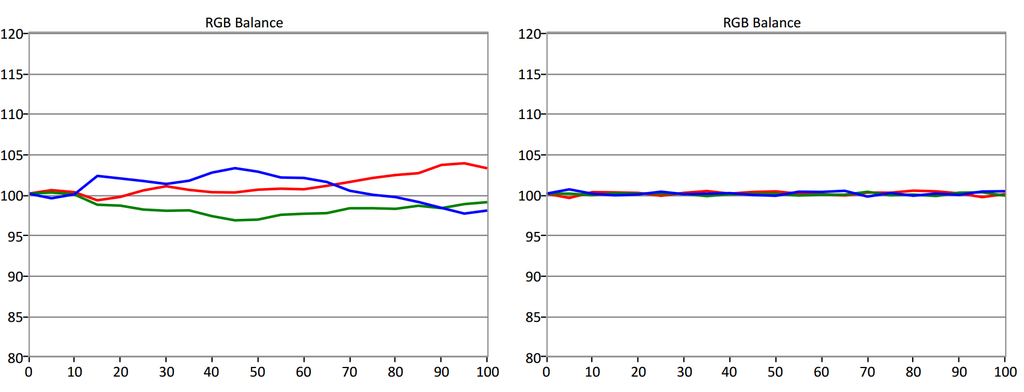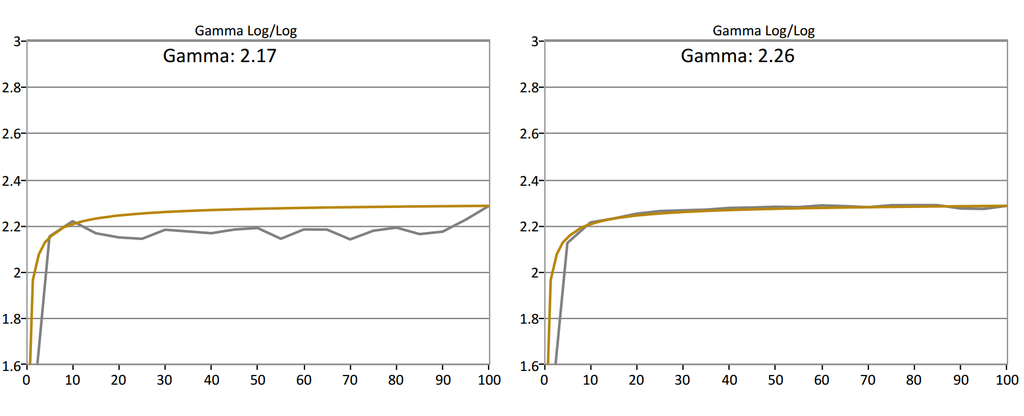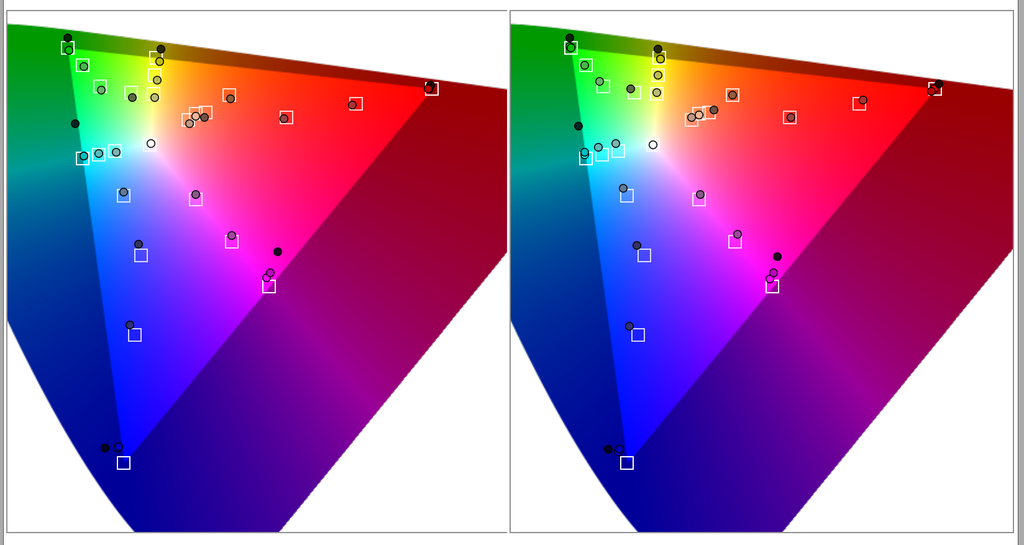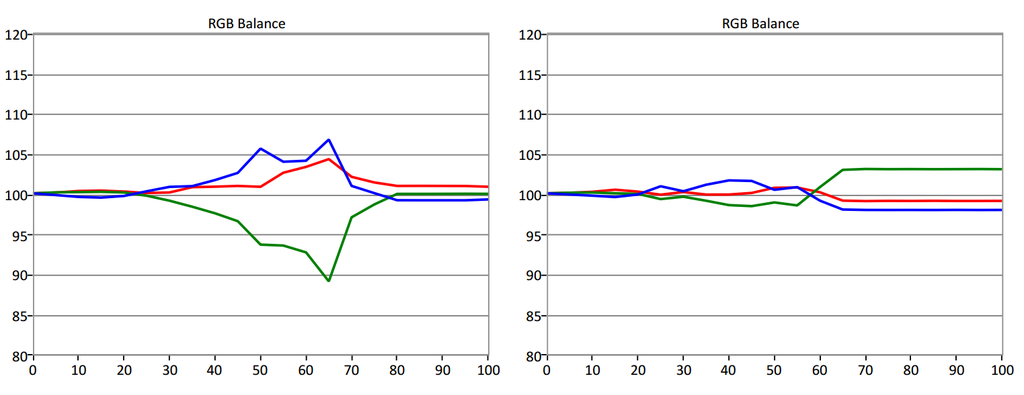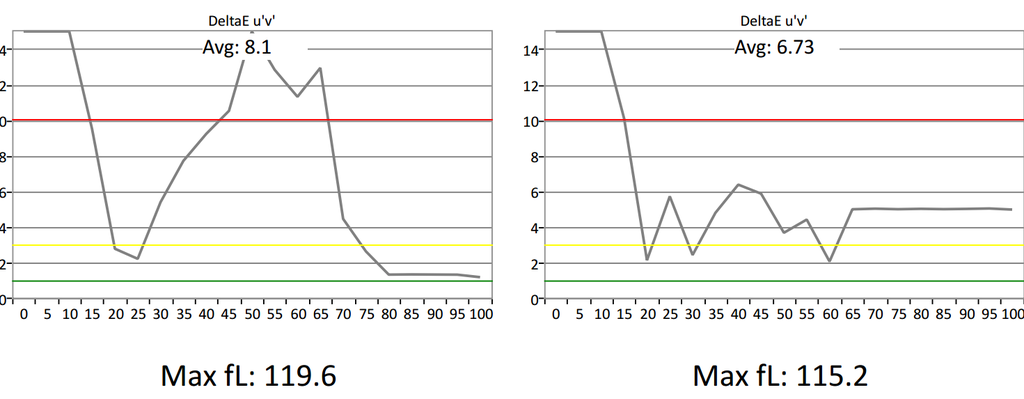Chad was here from 1000 to 1930. We did ISF1 for normal content and ISF2 for HDR content.
It looks noticably better with "normal content", and the HDR modes could be slightly improved via grayscale, but there wasn't much else to control. It reminds me of 3D back in the day, you calibrated your display for 2D, and when you watched a 3D disc you just threw it in and enjoyed what you got. Not a big deal because I've been through this before, but the 2016's and 2017 models will probably offer better control over an HDR cal, like todays displays have excellent 3D calibration controls.
Going to take time... It's also funny, the Standard vs WCG modes offered 87% P3 and 88% P3 respectively, and the WCG mode tried to make colors seemingly more vibrant I guess, because it's errors were HIGHER than standard. If anything I'd recommend watching UHD in Standard color mode, not Wide. Even at gamma setting 2.4, it was still low. Between that and the colors, it was LG's tricks for making the display seem brighter.
Reminds me of the days when plasma did the same kinda tricks you could not beat, to get more light output. Not a good move but it is what it is. Like I said, Ive been through this with 3D, and it is not a big deal to me, because even in the poor as found mode The Martian UHD in HDR looks great to my eyes, so I imagine the after version with a slightly better gamma and better grayscale will be even more enjoyable. I hope to watch The Revenant tomorrow night and will use the ISF2 HDR mode.
Audio sounds great, he uses Audyssey Pro and then checks and finds things to improve using REW. We found my subs had a dip at 20hz were we able to fix, and it has some more kick to it now. I know that because we watched the armored car scene from The Dark Knight, something I have watched a ton and know what to expect.
So, end of it all, I have a very accurate standard mode, and a more accurate but far from perfect HDR mode, which I imagine will be kinda what you get from 2015 and even 2016 models. The 2015 models blank out the grayscale stuff when HDR is on, so you read it with HDR on, see the errors, cut HDR off, make adjustments for that, cut HDR back on, check... Rinse and repeat. The 2016's add more control that isn't blanked out with HDR on. Chad got some help from Tyler at Spectracal while we were working our way through this, and he confirmed what we were seeing is what they had seen on the 2015, and also that the 2016's offered more control.
Finally, we verified what Chad's new quantam data 780 generator put out with HDR on. BT2020, 10 bit. Just what you would expect it should.


